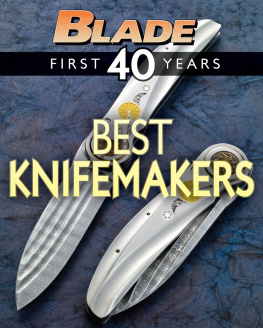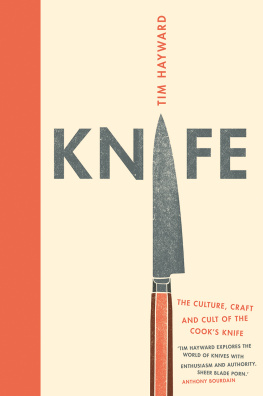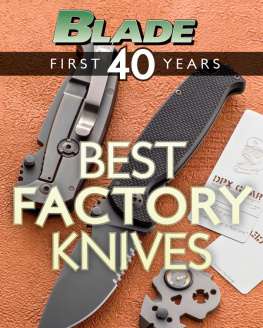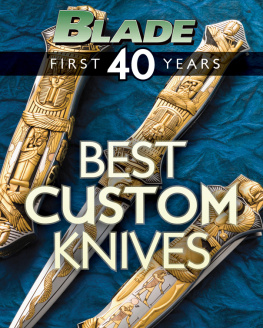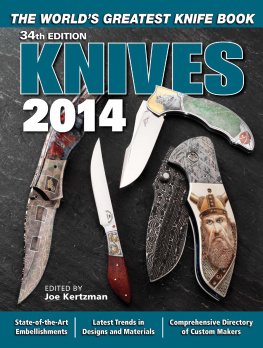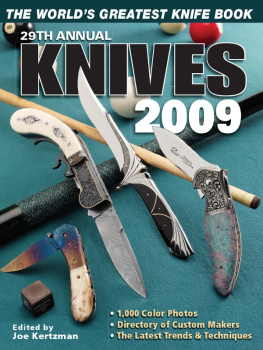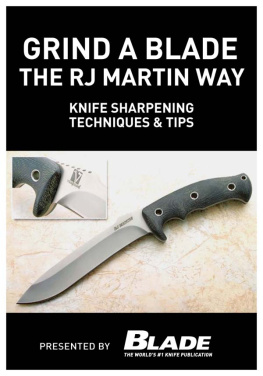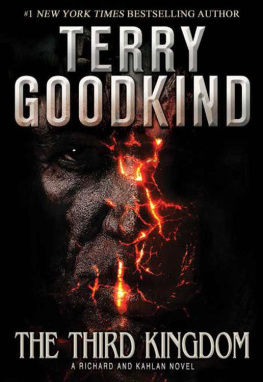Thank you for purchasing this Gun Digest eBook.
Sign up for our newsletter and receive special offers, access to free content, and information on the latest new releases and must-have firearms resources! Plus, receive a coupon code to use on your first purchase from GunDigestStore.com for signing up.
or visit us online to sign up at
http://gundigest.com/ebook-promo
CONTENTS
Chapter 1
Best Knifemakers 1973-1988
Chapter 2
Best Knifemakers 1989-2000
Chapter 3
Best Knifemakers 2001-2012
Chapter 1
Best Knifemakers 1973-1988
BLADE enters the home stretch in observance of its 40th anniversary by doing a three-part series recognizing the top 40 custom knifemakers over those first 40 years (1973-2013). The first installment in this final series identifies the top custom knifemakers from 1973 to 1988.
We compiled a list of some of the top makers over that stretch and submitted it to a panel of seasoned knife observers and asked them to select their top five to 10or however many they felt comfortable pickingand to rank them No. 1 up to as many as 10, with 1 being the best, 2 second best, etc.
Though top custom knifemakers can be subjective, we would like to think a top maker is one who excelled in terms of setting a standard that other makers attempted to emulate, and/or excelled in quality of craftsmanship, originality and creativityor both.
We no doubt inadvertently omitted a number of makers that should be included. As a result, we asked our panel members which one or ones we had left out and to rank them in their list, too.
The panelists are: BLADE Magazine Cutlery Hall-Of-Fame members B.R. Hughes and Paul Bos; Phil Lobred, long-time coordinator of the Art Knife Invitational; Dave Harvey, veteran purveyor, co-owner of Nordic Knives and co-promoter of the Solvang Custom Knife Show; and Francis Anglade, celebrated custom knife writer of Toulouse, France.
BOB LOVELESS

Lobred: The Knifemakers Guild was an A.G. Russell idea but it took Bob Loveless to make it work. When his work was done there, he began to open up the Japanese market, which was the salvation of the industry in the 1980s. Loveless became the most famous American knifemaker. I believe every maker on the planet made a Loveless dropped hunter at least once. Harvey: He is easily the most influential and emulated maker of the past 50 years. His design influence changed the look, feel and performance of modern custom knives.
BILL MORAN
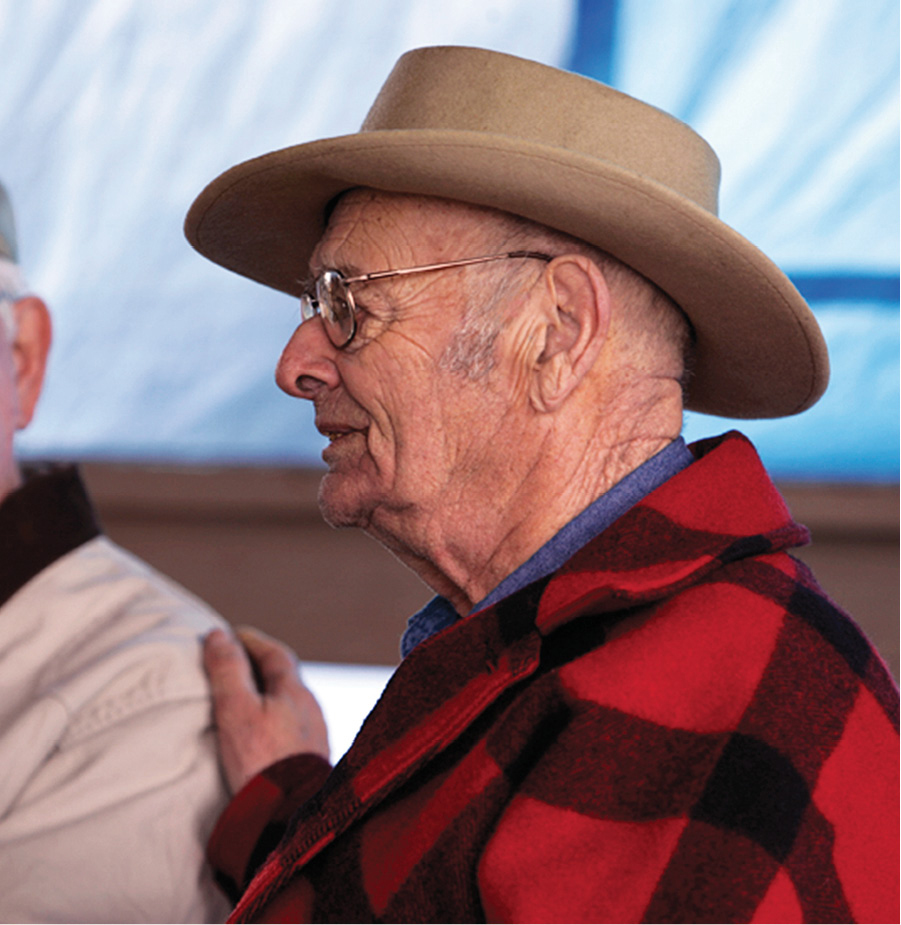
Lobred: With most of the industry following Bob Loveless and new super steels being developed like 154CM and D2, forging blades was giving way quickly to stock removal. With dogged determination, Moran stuck with the forged blade and became the first to display damascus blades at the Guild Show, the most important show of this period, causing quite a sensation. Bills pleasant personality was also part of his appeal. Harvey: As much a folk artist as a knifemaker, Bill was very influential in creating and growing the American Bladesmith Society. Hughes: His impact is immeasurable.
RON LAKE
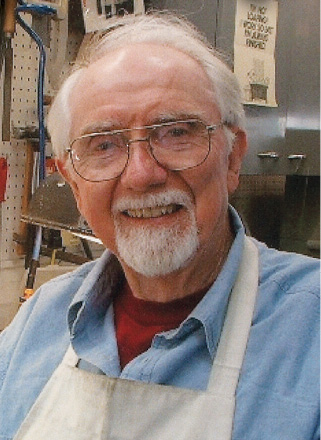
Hughes: Rons folder introduced at the 1971 Guild Show in Houston turned the world of handmade knives upside down. Few makers of the period had up to that time bothered with folders, but, almost overnight, Ron changed that. Lobred: Lake changed the whole folder industry during this period. He patented a new lock and made a knife that was visibly pleasing and operated as smooth as glass. And if that was not enough, his knives were incredibly strong and well made. His attention to detail was the best, his fit and finish impeccable. If you collected folders, you had to have a Ron Lake. Harvey: Rons knives may be the world standard for quality. Unbelievable fit and finish combined with straightforward, functional design.
BUSTER WARENSKI

Lobred: Buster could make anything and did. He was so talented he made knives other makers could only dream of making. During this period he made his two most famous gold Legacy knives, the King Tut Dagger and the Gem of the Orient. The King Tut Dagger was so difficult that no one has duplicated it again to this day. Harvey: Buster had it all: the finest fit and finish you could buy, along with an artistic flare that resulted in a great legacy of beautiful art knives.
TED DOWELL
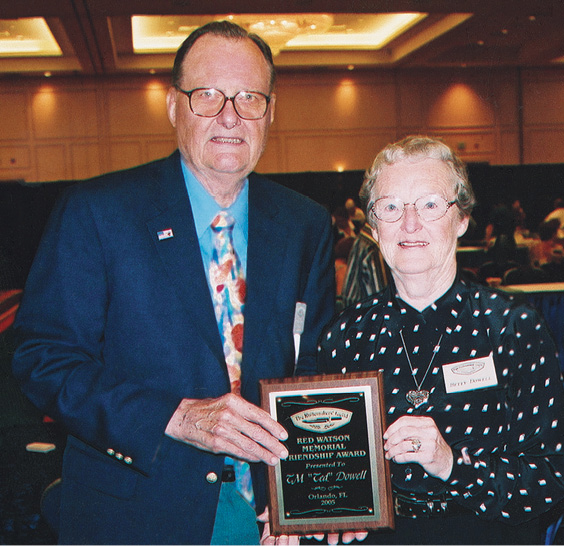
Lobred: When Ted Dowell made his first integral California knife, it opened up a whole new facet to the art knife genre. Hughes: His integral-hilt construction caught on with many makers and is widely seen today at any major knife show. Anglade: I think it was in this period that he promoted his full or half integrals, his Funny Folder, and his great lightweight hunting or utility knives. Bos: His knives were flawless and beautiful.
D.E. HENRY
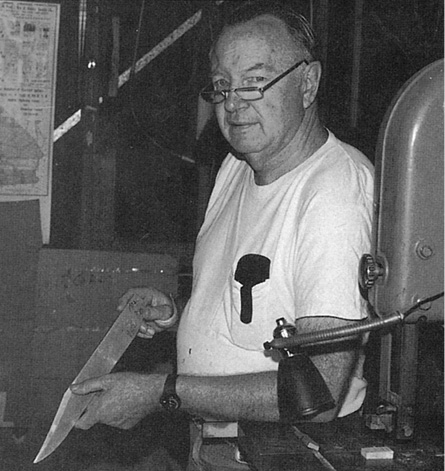
Hughes: The crispness of his work spurred knifemakers into going that extra mile and striving for near perfection. Lobred: D.E. Henry put bowie knives on the map.
JIM SCHMIDT
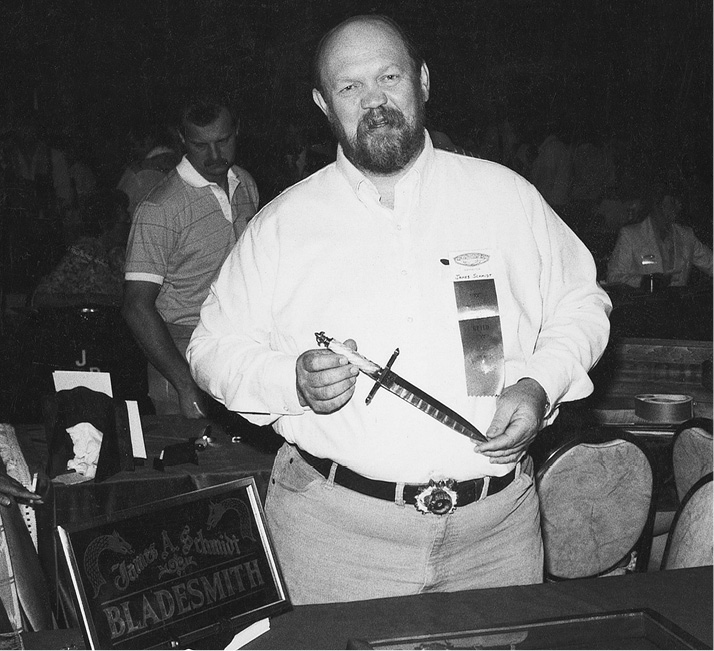
Lobred: Jim was the epitome of sole authorship. Collectors loved both the man and his knives. He was a gentle giant. His early work with damascus helped create techniques that are still used today. His ladder-pattern damascus was and is as good as it gets. His designs were new and novel, especially his carved gargoyle pieces. He became almost an overnight sensation and his work claims record prices today. He was one of the most popular makers of the day and he still retains that popularity. Harvey: A wonderfully talented craftsman who also possessed a rare artistic gift. Jim set a new standard for damascus steel, and built as fine a folding knife as you could ever desire, backed up by the many collectors today who dream about someday owning one of his rare blades.
W.W. BUD CRONK

Harvey: Years, maybe even decades ahead of his time, Bud Cronk executed some of the most challenging designs ever produced. His fantastic fantasy knives have never been topped, and dont look for them to be anytime soon. Lobred: Bud Cronk made unbelievable knives.

